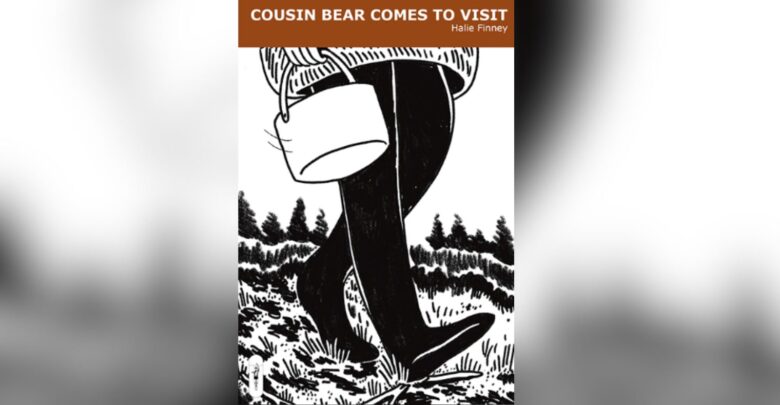Book review: ‘Cousin Bear Comes to Visit’
Finney explores poignant themes with a rare softness in her stunning debut graphic novel.
 Supplied
SuppliedIn her graphic novel Cousin Bear Comes to Visit, Métis artist Halie Finney tells the story of Francis the bear and her cousin, who comes to visit her. While they revisit their old haunts and talk over childhood memories, the cousin’s secret is eventually revealed, leaving both of them to reconcile with how to move forward.
Finney’s prose and illustrations are both thought-provoking and comforting. And while I could definitely do with a warm pie, a visit from a cousin, and a good game of crib, the themes of the novel transcend this surface-level interpretation. Finney brilliantly intertwines memory and reality, community and aloneness, joy and grief. By doing this, she creates an atmosphere that truly mirrors the complicated experience of being alive.
The story is non-linear, with flashbacks disrupting a chronological suite. The plot ebbs and flows, blending past with present to create a brilliant weaving of memory. Finney’s rejection of a conventional order allows a natural flow. It mimics real life in a way that is soft, genuine, and unrestrained.
As well, Finney’s atmospheric illustrations beautifully highlight both indoor and outdoor spaces. She transports her readers through her drawings. The illustrations alone remind the reader of the smell of pine trees and the sound of rustling leaves. Moreover, Cousin says about Francis’s house, “It’s so different but, like, still the same, you know? Still feels like home.” The idea of “home” weaves the story together. Home as a physical place, as a family and community, and as a connection to the land.
Finney uses a unique and fluid structure in the graphic novel, rather than a strict paneled form. Most pages have one illustration, with writing often creatively incorporated. These structural choices led me to slow down and focus thoughtfully on each page. Furthermore, her illustrations overflow set boundaries. The ink sometimes expands to the edges of the page — an artistic touch which mirrors the natural movement evident throughout the story.
Finney’s touching exploration of grief, nostalgia, and joy is based on her own community of the Lesser Slave Lake region. Not only can this be profoundly relatable as one is reminded of their own communities and families. But it can also be an invitation to empathize with characters whose experiences may differ from our own. Moreover, readers are prompted to look within themselves to their own assumptions and beliefs as they witness the beauty of Francis and her cousin’s lives.
However, her work doesn’t merely hold value in relation to the reader. Rather, in itself, her work is an inherently valuable and stunning celebration of life, community, and connection to the land.




